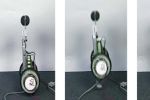By Sandeep Ravindran
Posted 01.09.2020 at 6:30 am
I-SWARM Microbot: Edqvist, et al. via PhysOrg
While Hollywood focuses on robots several times taller than humans, some researchers are building tiny robots that could fit on your fingernail. These microbots would work in swarms to collect data for a variety of applications, such as surveillance, micromanufacturing, and medicine.
The researchers, from institutes in Sweden, Spain, Germany, Italy, and Switzerland, use a novel approach to allow robots to be built cheaply and in large quantities. Working on a limited budget, they built an entire robot on a single circuit board.
[
Read Full Story ]








